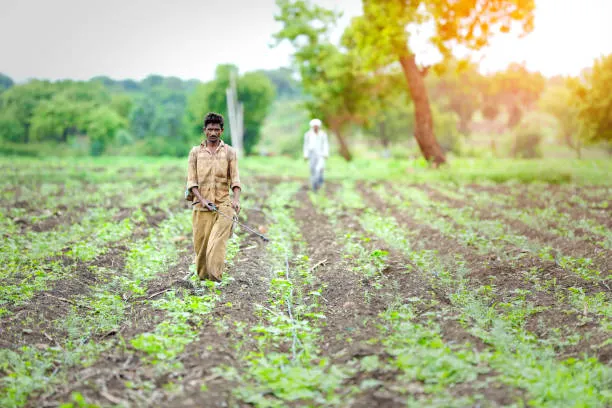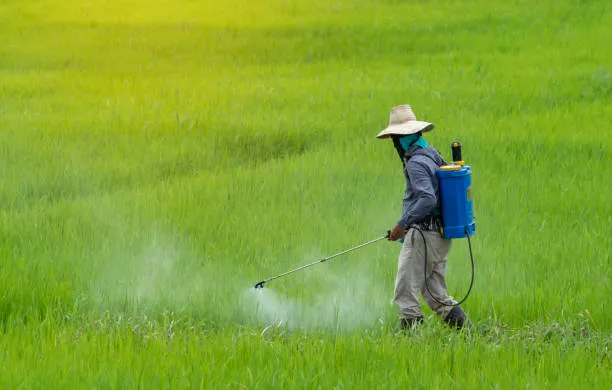Introduction
Pest infestations can severely impact crop health and productivity, leading to significant economic losses for farmers. Thiamethoxam 25% WG (Actara) is a highly effective systemic insecticide from the neonicotinoid class, widely used for controlling sucking and chewing pests in various crops. Known for its quick action and long-lasting protection, Actara is a trusted choice for cotton, rice, vegetables, fruits, and cereals.
This blog provides a detailed, plagiarism-free overview of Actara insecticide, covering its mode of action, benefits, target pests, application methods, safety precautions, and resistance management strategies.
What is Thiamethoxam 25% WG (Actara)?
Actara is a water-dispersible granule (WG) formulation containing 25% Thiamethoxam, a second-generation neonicotinoid developed by Syngenta. It is highly effective against a broad spectrum of sucking and chewing insects while being safe for foliar and soil applications.
Key Features:
- Chemical Class: Neonicotinoid
- Mode of Action: Nicotinic Acetylcholine Receptor (nAChR) Agonist
- Formulation: 25% Water-Dispersible Granule (WG)
- Target Pests: Aphids, whiteflies, thrips, leafhoppers, beetles
- Crop Compatibility: Cotton, rice, wheat, maize, vegetables, fruits
Mode of Action
Thiamethoxam works by:
- Binding to nicotinic acetylcholine receptors in the insect’s nervous system.
- Overstimulating nerve cells, leading to paralysis and death.
- Providing systemic protection – absorbed by plants and distributed to leaves, stems, and roots.
Key Advantages of Its Mode of Action:
- Quick knockdown effect – Pests stop feeding within hours.
- Long residual activity – Protects crops for 2–4 weeks.
- Effective against resistant pests due to unique chemical structure.
Benefits of Thiamethoxam 25% WG (Actara)
- Broad-Spectrum Control – Effective against aphids, jassids, whiteflies, thrips, and beetles.
- Systemic & Translaminar Activity – Protects new growth and hidden pests.
- Flexible Application – Can be used as foliar spray, soil drench, or seed treatment.
- Rainfastness – Adheres well to leaves, reducing wash-off.
- Compatible with IPM – Safe for beneficial insects when used correctly.
Target Pests & Crops
1. Cotton
- Aphids (Aphis gossypii)
- Whiteflies (Bemisia tabaci)
- Thrips (Thrips tabaci)
2. Rice
- Leafhoppers (Nephotettix spp.)
- Plant Hoppers (Nilaparvata lugens)
3. Vegetables (Tomato, Chilli, Brinjal)
- Whiteflies (Bemisia tabaci)
- Aphids (Myzus persicae)
4. Fruits (Mango, Citrus, Grapes)
- Mealybugs (Planococcus citri)
- Thrips (Scirtothrips dorsalis)
Recommended Dosage & Application Method
1. Foliar Spray (Most Common Method)
- Dosage: 0.3–0.5 g per liter of water (or 50–100 g per acre).
- Spray Timing: Apply at first sign of infestation.
- Frequency: 1–2 sprays at 15-day intervals.
2. Soil Application (For Sucking Pests in Nurseries)
- Dosage: 1–2 kg per hectare (mixed with irrigation water).
3. Seed Treatment (For Early Pest Protection)
- Dosage: 3–5 g per kg of seeds.
Safety Precautions & Handling
- Wear PPE: Gloves, mask, goggles, and full-sleeved clothing.
- Avoid inhalation & direct contact – Wash hands after use.
- No eating/drinking during spraying.
- Storage: Keep in a cool, dry place, away from food and feed.
- Disposal: Triple-rinse containers before disposal.
Environmental & Resistance Management
- Toxic to Bees – Avoid spraying during flowering.
- Moderately Toxic to Aquatic Life – Prevent water contamination.
- Resistance Risk: Rotate with non-neonicotinoid insecticides (e.g., spinosad, fipronil).
Conclusion
Thiamethoxam 25% WG (Actara) is a highly effective, systemic insecticide for controlling sucking and chewing pests in multiple crops. Its quick action, long-lasting protection, and flexible application make it a farmer-preferred choice.
However, responsible usage is crucial to delay resistance and protect pollinators. Always follow label instructions, rotate insecticides, and adopt IPM strategies for sustainable pest management.
Final Recommendations for Farmers
Monitor fields regularly for early pest detection.
Use at recommended doses – Higher doses do not improve efficacy.
Rotate with other MoA groups to prevent resistance.
By using Actara insecticide wisely, farmers can achieve better pest control, higher yields, and improved profitability.
Disclaimer: Always follow the product label and local regulations. Consult an agronomist for crop-specific recommendations.
Sourashis Chanda brings readers their unique perspective on Business, Economy, Health and Fitness. With a background in Health and Physical Fitness of 2years, I am dedicated to exploring [what they aim to achieve with their writing, on the sustainable Economy of the country, various pro tips about business, latest goverment news, with some tips in health are and Fitness.







